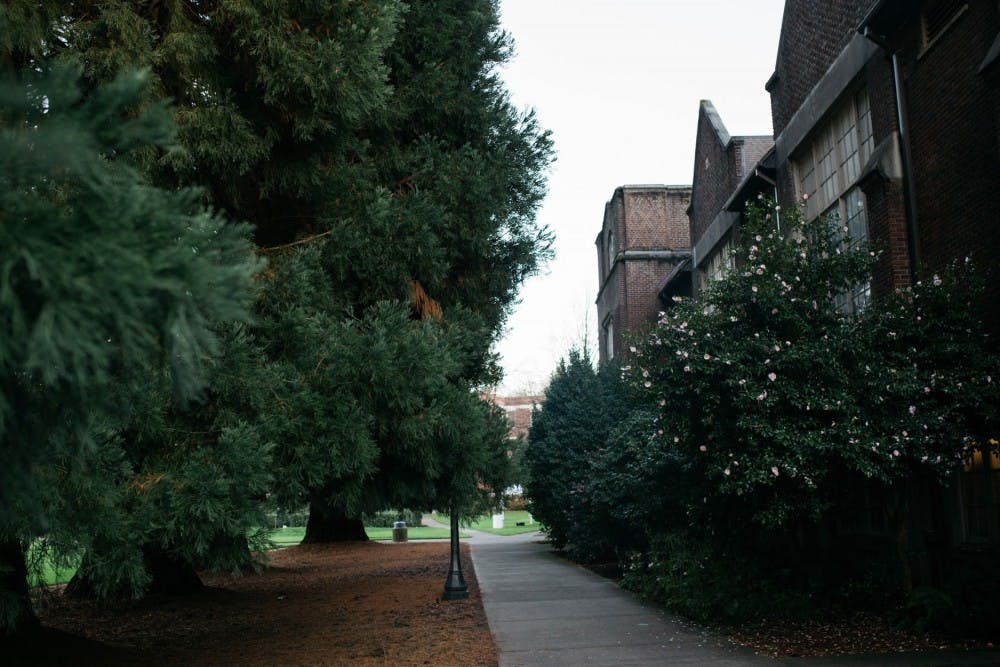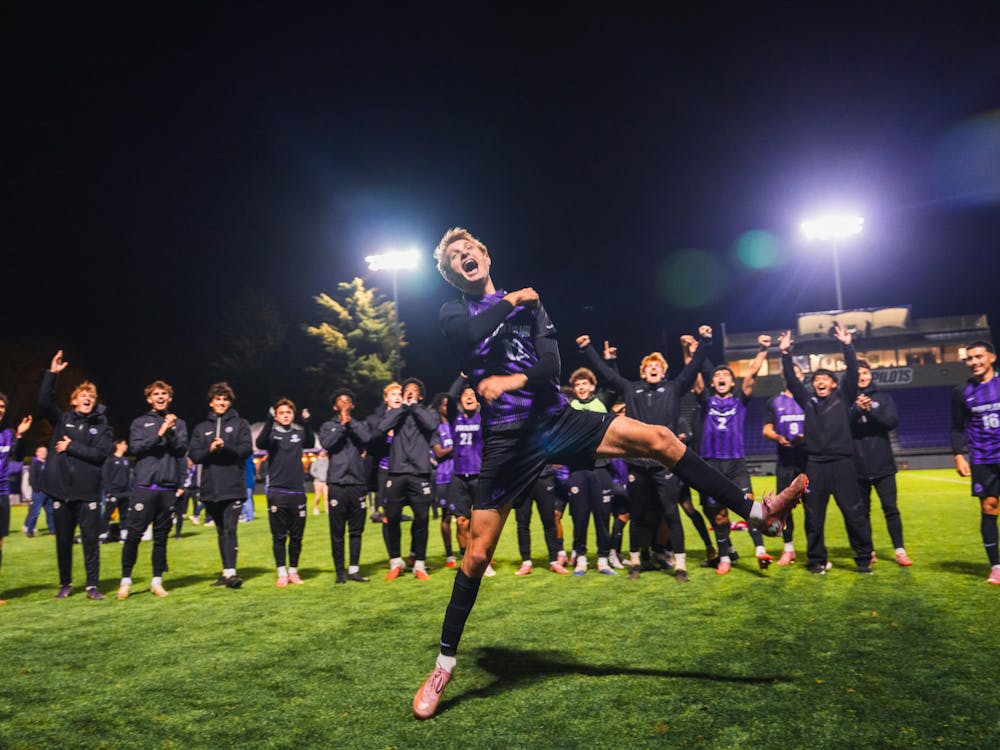The University of Portland hopes to start construction on a new academic building in place of Howard Hall as soon as this summer.
While the extra 30 some-odd classrooms and a new Career Services Center are a welcome addition to a campus that has been struggling with space, several students and faculty members are concerned because the University has not yet ruled out removal of the seven giant sequoia trees outside of Howard Hall.
One of the most vocal advocates for protecting the trees is environmental science professor Ted Eckmann. Eckmann and the students in his environmental lab are researching the trees and their effects on the temperature of East Quad.
Eckmann said the giant sequoias are extremely valuable to campus, not just for their beauty, but because of their size and environmental contribution to campus. Sequoias can live up to 3,000 years and can grow up to 300 feet in height and 30 feet in diameter.
The seven sequoias outside of Howard were planted by Brother Ferdinand Moser as seedlings in the early 1930s. Ranging from 80 to 120 feet tall, the trees have not yet reached their full height or lifespan.
“This isn’t just your average tree,” Eckmann said. “It’s the largest living thing ever in the history of the Earth.”

Eckmann is concerned with early designs of the building that show no accommodation for the trees. He says that several preliminary architectural designs show a concrete pathway in place of where the sequoias stand now.
“Clearly the architects are not instructed that you can’t kill any sequoias or they (the University) would have come up with different plans showing all of the sequoias surviving,” Eckmann said.
Vice President of University Operations Jim Ravelli said that while the University has an initial site laid out for the building, it will not be finalized until consulting with an arborist, which Ravelli hopes to do by the end of the calendar year.
“I think the design is probably 75 percent done,” Ravelli said. “It’s an idea. We would never build a building based on those drawings.”
However UP’s College Ecology Club finds it bewildering that the University has not already consulted with an arborist in designing the building. Club President Anthony Ng said the club may launch a campaign vying for the University to consult an arborist sooner.
“It makes me nervous,” Ng said. “I feel like if they wait too long for the arborist, then the building construction will be an even higher priority and whatever the arborist says will not be relevant anymore.”
As for the likelihood that the large trees can withstand the stress of construction, Chair of the Environmental Science Department Steve Kolmes said an arborist would have to look at how close the roots come to the foundation of Howard Hall.
The University doesn’t know how close the root balls of the trees come to one another either, according to Kolmes. If all of the roots of the trees are entangled, killing one tree could kill them all.
Kolmes said it’s very likely that the University can at least save a few of the trees, but Eckmann would not consider this a victory. All of the trees aid in regulating the quad’s temperature, which, according to Eckmann, affects the campus economically as well.
This is a key component of the research project students are working on in Eckmann’s environmental lab.

The lab’s research suggests that on a hot afternoon in August, areas guarded by the trees’ shade, including much of the quad and Howard Hall, would be 10 degrees cooler than the surrounding areas.
Eckmann pointed out that this means the trees have the potential to cool the new academic building 10 degrees more every day in the summer, reducing the amount of money needed for air conditioning.
Ravelli said that if the sequoia trees do have to come down, the University will respond with “remediation,” meaning they will plant a tree of equal size and width to the sequoias somewhere on campus to combat any environmental loss.
But although sequoias grow rapidly, their growth rate is much slower during their first 50 years of life. A sequoia is likely to grow two feet per year in its first 50 to 100 years. This means it would take another 50 years or more to grow sequoias of equal size in East Quad.
This is precisely why Eckmann feels that students, alumni and younger faculty should be involved in the decision making process for the building, at least in respect to the sequoias.
“You can’t offer to plant new sequoias and it’ll be all good in 75 years when you can’t protect them for 75 years,” Eckmann said. “I want to see students be the primary decision makers here. This affects them a whole lot more than people who won’t be around 75 years from now.”
Ng, a senior environmental science major, agrees that students need to make their voices heard on the issue. He and other members of the College Ecology Club have asked ASUP to pass a resolution in favor of saving the trees. They’ve also drafted a #savethesequoias campaign that will be put in action if the University does announce plans to cut the trees down.
“The student body knows absolutely nothing about the building,” Ng said. “We need dialogue and communication and social media educating students about what’s actually happening.”
Many students also feel personally attached to the trees.
“As a resident of Shipstad, looking out at the trees, it’s like home almost,” sophomore political science major Sam Starkey said. “There are so many memories you have on East Quad and if we were to disrupt the nature of those trees for a building, I would be devastated.”
Ravelli said it’s up to faculty representatives like Kolmes to bring student opinions or the results of Eckmann’s environmental lab studies forward to faculty steering committees.
But with a full six months before any physical action is set to take place on the site of Howard Hall, Kolmes says it’s too early to start mourning the sequoias.
“What I know so far is tentative enough that I’ve not gotten very worried about this,” Kolmes said. “There’s no sense in getting upset until you know you should be upset.”








